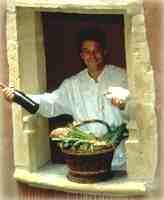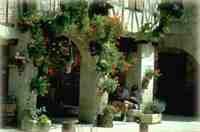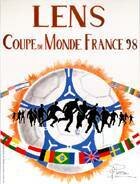 A City with Stamina Located in the heart of the Artois district, the City of Lens is spread over approximately 1,100 hectares. Favourably located in the centre of the Nord-Pas-de-Calais region, it has a population of 350,000. The citizens of Lens, who are recognised for their courage, altruism and hospitality, are proud of their history and extremely attached to the land. Development fueled by coal New-found vitality In step with this new expansion, the city of Lens has developed its sports, cultural and university facilities. Today, 3,000 students were involved in higher education in the area. Today, the "Grands Bureaux," the former coal-mining headquarters offices, have been given back to the people, and in 1992, the municipality played an important part in founding the Jean Perrin Faculty of Sciences, which is now part of the Artois Region University.
In carrying out its many development projects, the City of Lens works in close co-operation with other communities, in particular within the Lens-Liévin District, which at present comprises 36 municipalities, with a total population of 251,000. The Lens area is also known for its youthfulness (41% of citizens are under 25) and a demographic vitality which rank the region as one of the "youngest" in France (birth rate is 17.1%).
LENS in the run-up to the World Cup Prepare to host the World Cup! A collective effort With Lille's candidacy bid for the 2004 Olympic Games having been turned down, it is the World Cup that has definitely taken over in the hearts of the population in the Nord-Pas-de-Calais region. And make no mistake: when one knows how excited the population of Lens and its renowned football fans can get over a black-and-white ball, one can easily imagine the atmosphere that will spread throughout the region when the time comes for the World Cup! The Lens Racing Club will travel to about 30 towns in the area with the "Mini Bollaert," a mobile football pitch, and offer a wide range of activities for the young and not so young. The World Cup will, of course, be central to this initiative, which has received generous support from local partners. A time for celebration It has been a priority in Lens to include young people in preparations for the big footballing event. Thus, Lens schoolchildren have prepared an exhibition on the World Cup. This initiative fits into a wider-scale citizenship education project, based on inter-school exchange programmes among the ten host cities. Of one thing you can be certain, the summer of 1998 in Lens will be a memorable one! |
POPULATION |
|
Lens appeared for the first time during the Merovingian period. The city was probably founded by the Roman proconsul Lentulus. |
||
Lens became the headquarters of the most powerful Coal Mining Company in France, because of the large quantities of coal extracted and also because of its subsidiaries; this resulted in the city's expansion. |
||
 of coal in the region led to an increase in population, totalling 42,733 inhabitants in 1962. |
||
From October 1914, the city lived through the horror of an invasion. It was occupied from 1914 to 1918 and suffered terrible destruction. By the end of the war, its population had dropped by half. |










